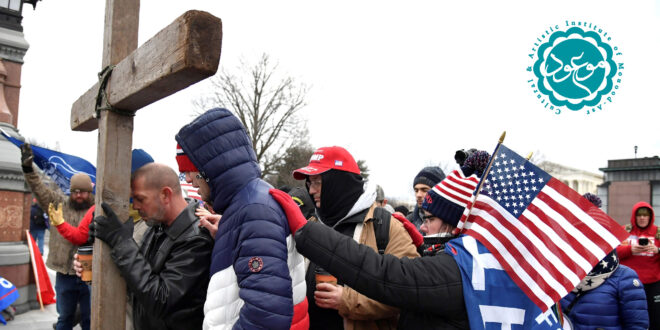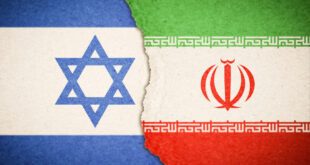According to Mouood, quoting by Politicio:
There Is a Real Sense That the Apocalypse Is Coming
A former evangelical tracks the rise of white Christian nationalism — and looks ahead to where the movement goes next.
When Donald Trump’s supporters stormed the Capitol on Jan. 6, 2021 — many of them carrying Christian symbols like crucifixes, statues of the Virgin Mary and even life-sized portraits of Jesus Christ — a terrible thought occurred to Bradley Onishi: “Could I have been there?”
For much of his young adult life, Onishi had been steeped in the very same mixture of religiosity and radical far-right politics that was on display at the Capitol.
After growing up in a secular household in Orange County, California, Onishi joined an evangelical megachurch at age 14. During high school, he led prayer meetings during lunch break and handed out anti-abortion pamphlets to his classmates. By the time he was 20, he had married his high school sweetheart, taken a job as a full-time youth minister and made plans to enter the seminary.
“I wasn’t just a member of a church. I was a leader, and somebody who gave everything that I had to faith and to my community,” Onishi says today.
In college, though, as Onishi began to learn more about the history of American evangelicalism, he discovered that the theology he had embraced as a teenager wasn’t merely a reflection of eternal biblical truths.
It was also the product of a particular style of conservative Christian politics. Eventually, he came to view evangelicalism as inextricably intertwined with American nationalism, white supremacy, patriarchy and xenophobia.
Eleven years after joining the church, he left his faith behind to pursue a career as a writer and academic.
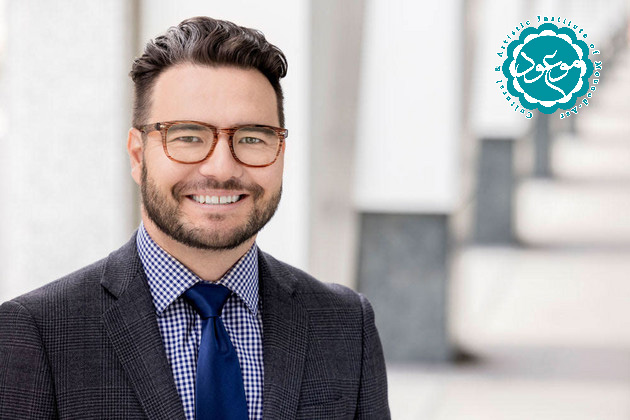
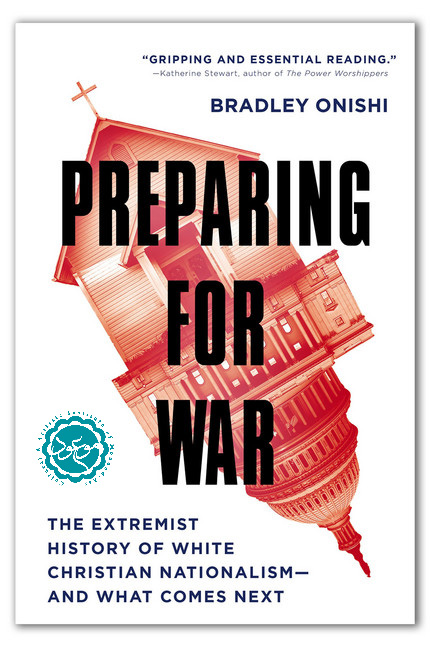
Now, two years after Jan. 6 rioters carried the cross to the Capitol, Onishi — a faculty member at the University of San Francisco and the co-host of the popular podcast Straight White American Jesus — is bringing his background in the evangelical movement to bear on the rise of white Christian nationalism.
Premised on the belief that America is a white Christian nation whose laws and culture should reflect its biblical heritage, Christian nationalism has attracted fresh scrutiny in recent months thanks to endorsements from prominent Republicans like Rep. Marjorie Taylor Greene (R-Ga.) and failed Pennsylvania gubernatorial candidate Doug Mastriano.
But what’s been missing from the broader conversation about the movement, Onishi argues in his new book, Preparing for War: The Extremist History of White Christian Nationalism — and What Comes Next, is a nuanced sense of how contemporary strains of white Christian nationalism relate to earlier iterations of conservative Christian politics.
For Onishi, understanding the history behind today’s movement doesn’t just explain white evangelicals’ support for Trump or demystify the religious valences of Jan. 6. It also provides a window into the political forces shaping the American right as a whole.
“There is a real sense [among white Christian nationalists] that the apocalypse is coming for this country if [they] don’t do something radical,” Onishi says. “The idea that they would continue in ways that are standard — campaigns, voting drives, national renewal through ecumenical movements — that went by the wayside.”
The following has been edited for clarity and concision.
Ward: You identified the origins of white Christian nationalism in the conservative counter-revolution to the social and political changes of the 1960s. Ideologically, that backlash took the form of anti-communism, libertarianism and militant social conservatism. How did Christian identity fit into that matrix?
Onishi: Christian identity provided a very expansive story to that movement. It offered a story that could unite people who may have had disparate ideas about policy or who came from different regional settings. If you have a story that says, “This is a Christian country, it was built for and by Christians” — and implicitly stated these are white Christians — you start to have a narrative that is, in some tragic sense, a unifying one.
It also gives extraordinary authority to ordinary political policies and movements. It says that the push to overturn Roe v. Wade, or some military or foreign policy matter, is not just a political matter, as pressing as it may be. It’s actually something that is of divine importance.
I think the last thing it does is it puts those who buy into this story on the side of God. That may sound trite, but when you have an understanding of yourself as playing a special role in history, as outlined by the Creator, your political life takes on a supercharged dimension. I think we saw that on Jan. 6.
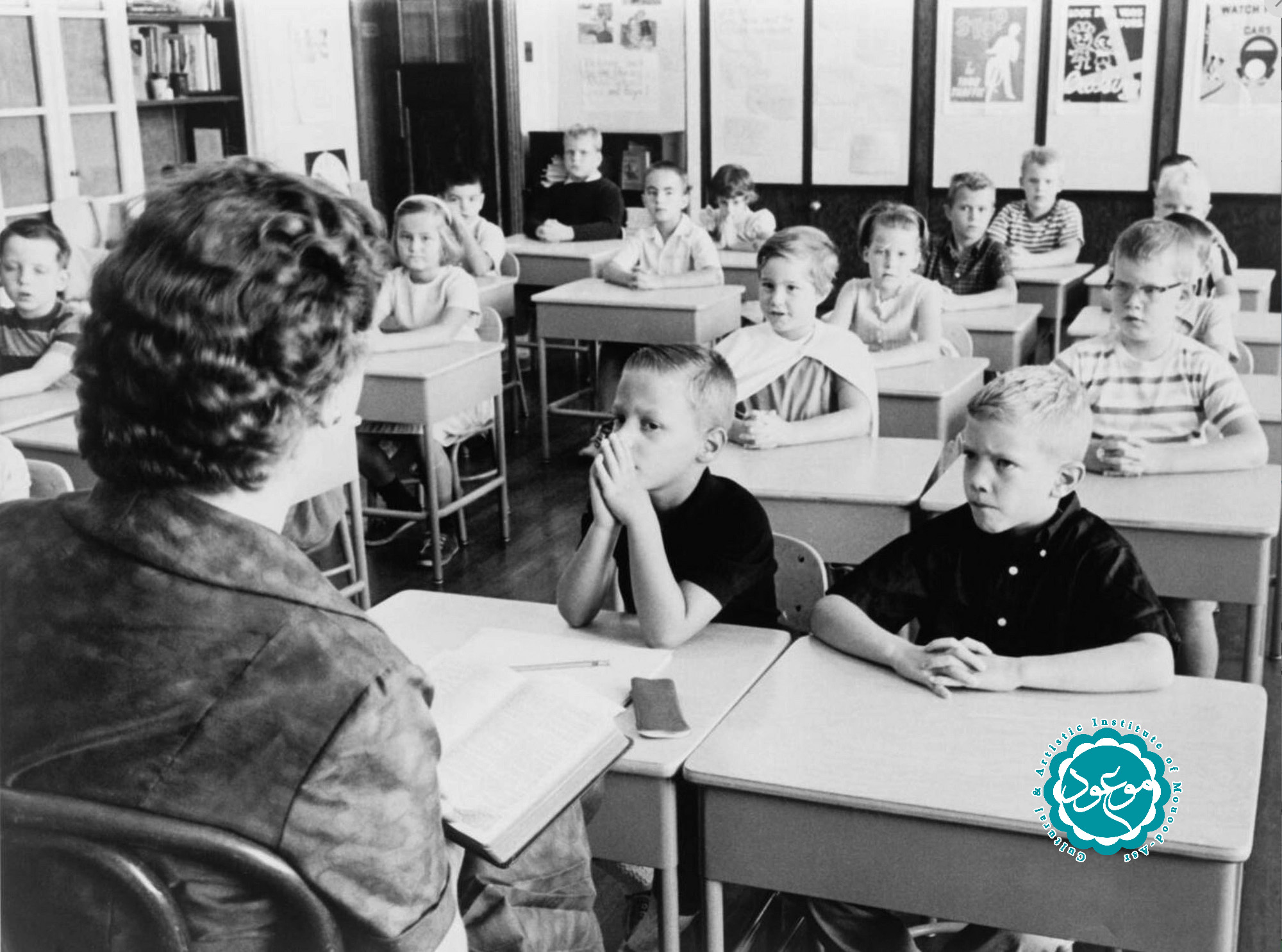
Ward: An important but underappreciated factor in the rise of white Christian nationalism were two Supreme Court cases in the 1960s pertaining to prayer in schools — Engel v. Vitale in 1962 and Abington v. Schempp in 1963. How did the reaction to those decisions shape the early Christian nationalist movement?
Onishi: In essence, what those cases did was make it illegal for public school districts to teach the Bible in their curricula as a religious text, as something that is instructive for all students.
They also banned prayer in school on the part of school officials and school authorities. What those court cases did for many Americans was just to say, “Look, if you’re a Jewish kid sitting in a fourth-grade classroom, or a non-religious kid sitting in a junior high, you don’t have to start your day with the principal saying a Christian prayer or a teacher saying that it’s now time for us to do our daily Bible reading.”
However, they were framed [by conservative Christians] as signs that the United States was moving toward an anti-Christian and an anti-God future. They were presented as taking God out of schools, taking prayer out of schools, taking the Bible out of schools — and this became their rallying cry.
It was so easy for ministers and political leaders to say, “Well, when you take God out of the schools, what do you expect to happen to the country?
Children are going to lose their way, the country is going to fall into chaos, and we have no choice but to challenge public school curricula and send our kids to private Christian schools that are going to emphasize God and a God-focused curriculum.”
Ward: “They’re taking God out of the schools,” has persisted as a rallying cry among conservative Christians, but you point out in the book that that was really only half the equation. The other half was captured in a quotation from George Andrews, a congressman from Alabama, who responded to the Supreme Court decisions on prayer in schools by saying, “They put the Negroes in the schools and now they’ve driven God out.”
Onishi: I think that quote from George Andrews really provides us with both factors that are at play here. The context for this debate is the 1954 Brown v. Board of Education decision that integrated schools across the United States, particularly in the South.
There were many white families that did not want to send their children to integrated schools, and this led to the advent of hundreds of schools attached to churches that were, in essence, segregation academies. They did not allow Black students.
If we fast forward to the late 1960s and early 1970s, the IRS and the federal government began threatening to take away the tax-exempt status of those churches if they continued to practice segregation.
This led to a second rallying cry: that the federal government is interfering in the life of the American church, that it is persecuting Christians, and that it’s persecuting the choices of families who want to send their children to the schools of their choice.
The George Andrews quote really encapsulates how racism and a sense of Christian persecution are the double foundations of this early movement.
Ward: Hopefully POLITICO’s readers will be familiar with Randall Balmer’s argument about “the abortion myth” — the thesis that the issue that first mobilized evangelicals politically was the fight over school segregation and not the fight over abortion.
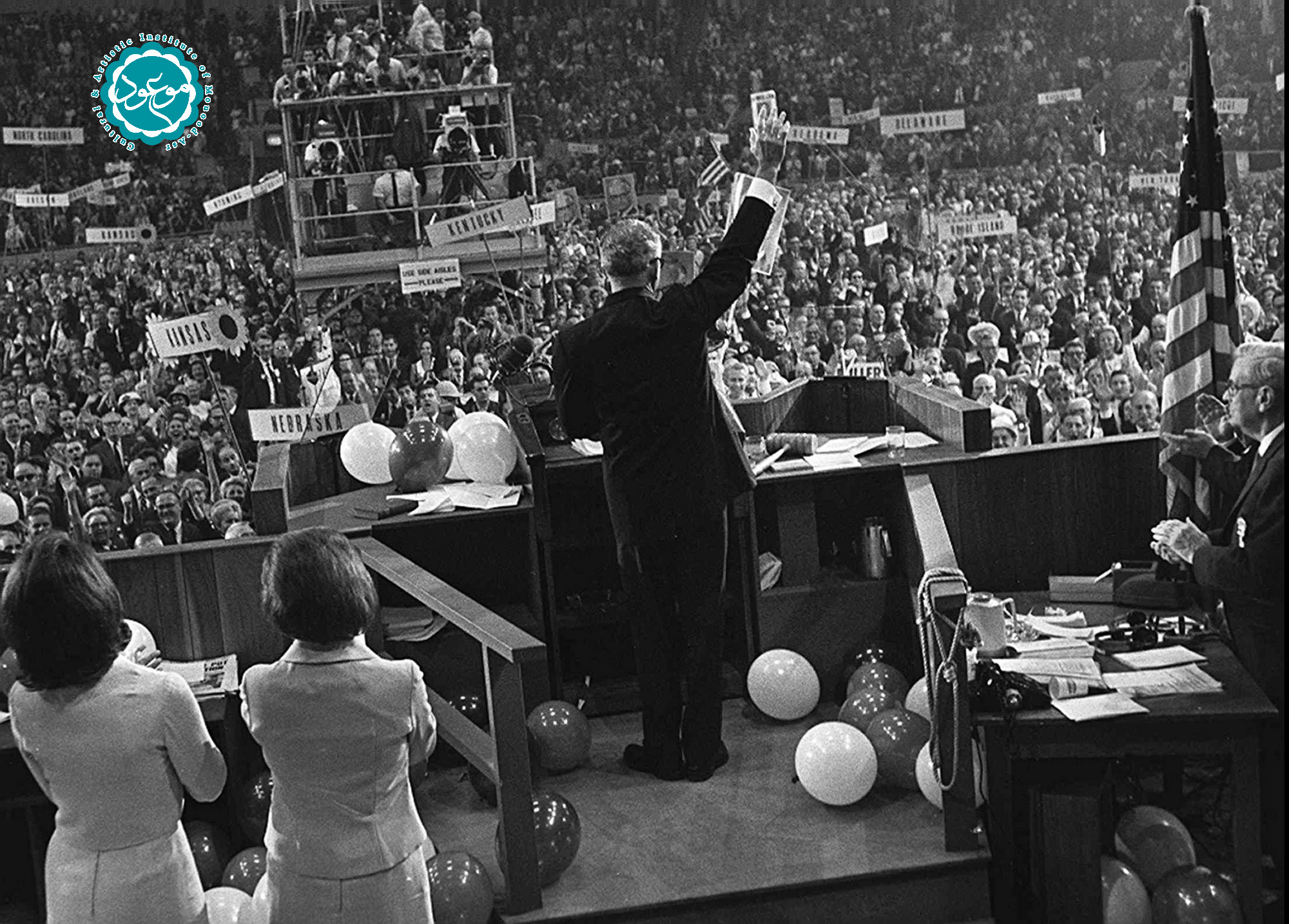
Onishi: I’m happy to say that Balmer outlined that history in grand detail in POLITICO and elsewhere.
Ward: You also argue that Barry Goldwater’s campaign in 1964 prefigured some of the Christian nationalist themes that became more explicit in the 1970s. Goldwater famously broke with the religious right in the 1980s, but how did his campaign contribute to the incipient white Christian nationalist project?
Onishi: Goldwater presented an uncompromising conservatism. He was bombastic on the campaign trail. He said that we might need to use nuclear weapons in Vietnam. He said that while he personally supported the idea that Black and white folks in the South should live and work next to each other, he said that he was not going to sign any laws that forced integration.
And he famously delivered a line during his presidential nomination acceptance speech where he said, “Extremism in the defense of liberty is no vice.”
I think that’s worth thinking about. In essence, he’s saying that in times like these — the 1960s, when the civil rights movement was brewing, there were calls for immigration reform, women were pushing for independence and autonomy — extremism is the way that you can keep a hold on your country.
Extremism is the modus operandi you are going to need to adopt if you are going to continue to hold positions of power in the political, social and economic realms. The foot soldiers of Goldwater’s campaign never forget this message.
Ward: Speaking of his foot soldiers, historians often point to the formation of the Moral Majority in 1979 as the moment when the religious fervor of evangelicals like Jerry Falwell formally entered into a political alliance with the political extremism of the New Right, led by former Goldwater supporters like Paul Weyrich and Richard Viguerie.
But in some respects, that moment marked not only the beginning of a new sort of conservative politics, but also the culmination of a decades-long project of organization and collaboration between those two camps. What sort of political legwork went into making that union possible?
Onishi: Goldwater lost in a landslide in ’64, but his foot soldiers never lost their enthusiasm for his message and for this extremism. So throughout the ’60s, people like Paul Weyrich, Richard Viguerie and Morton Blackwell were working to build a political apparatus that would match what they saw on the Democratic side.
What they wanted to do was take all of the charisma of Goldwater and turn it into a set of institutions and bureaucracies that would enable the takeover of the GOP and of American politics writ large.
What they realize in the early 1970s is that they don’t have enough votes, but they realize that if they can form a coalition with white, conservative Christians, they can find tens of millions of votes. And if they can promise the leaders of that movement — someone like Jerry Falwell — access to power, [those leaders] will no longer be laughed away as backward, rural Christians or old-timey people that have not caught up with modern America.
This coalition building was already happening in the late ’60s and early ’70s, well before the official formation of the Moral Majority in 1979.
Ward: Weyrich, in particular, was not coy about his aims. For instance, you cite his statement: “We are all radicals working to overturn the present power structure.” If that’s not a pretty clear echo of Goldwater’s endorsement of political extremism, I don’t know what is.
Onishi: That’s exactly right. And Weyrich said that as somebody who was actively building the Council for National Policy and the Heritage Foundation. It’s easy to write him off as a boring institution builder, but what he was trying to do was instill the revolution into the institutions that make the GOP move and run — and he succeeded, largely.
Ward: One of the first actions of the New Religious Right was to declare war on Jimmy Carter. Carter was an evangelical, but he embodied a very different style of evangelical politics. What did the clash between the New Religious Right and the Carter administration reveal about the nature of their project?
Onishi: Jimmy Carter was almost made in a lab, in terms of being a white Christian president. He’s a Southern Baptist by birth, a military officer, a peanut farmer, and married to his high school sweetheart. However, when Carter got into the White House, he put more women and people of color in the judiciary than anyone before him.
He was not publicly outraged by calls for more representation of gay Americans and gay families. He was not taking a hard-line stance on abortion.
And perhaps most damning was that he was a dove on foreign policy — he wanted to use diplomacy when it came to America’s interest in conflicts all over the world.
It was all of those components that led Weyrich, Falwell and their cohorts to put everything they had behind Ronald Reagan, who was not one of them in a very strict sense. What this tells me is that their project was about power and not piety.
Ward: Another defining feature of the New Religious Right was an intense focus on “family values” — and in particular on a certain vision of sexual purity — embodied by groups like James Dobson’s Focus on the Family. You write very movingly in the book about how purity culture influenced your own upbringing, but could you explain how the movement’s intense focus on individual purity also contributed to its political radicalism?
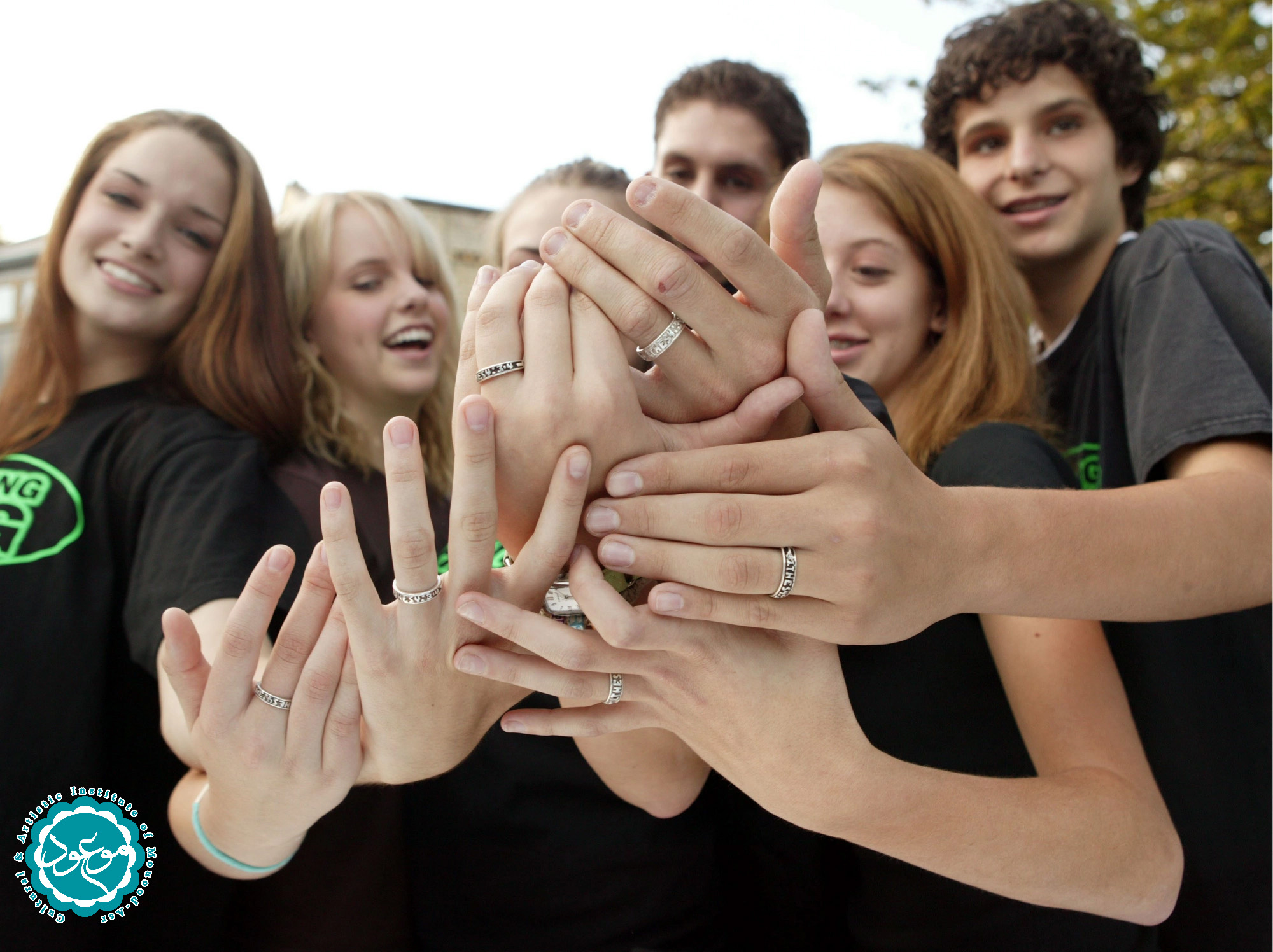
Onishi: Purity culture dates back to the ’80s and ’90s, and it is a movement within predominantly evangelical churches that encourages young people to abstain from sex before marriage. But it goes further than that. It teaches that one should abstain from sexual thoughts before marriage, because even a sexual thought is adultery, and it teaches really rigid gender roles about men being leaders.
But there’s another component that often goes missing when we discuss purity culture. It was a project of national renewal. The idea was that if churches could get their young people to build the right kind of families with the right kind of straight, patriarchal relationships, and if they could get them to abstain from anything that transgressed any of those boundaries, then those families could be the building blocks of the right kind of America.
What this meant was excluding any sense of impurity, not only in teenage relationships but in the American body politic as a whole. And impurity in this vision is infection coming from immigrants and the infecting of the American bodies through queer families and queer relationships that are not part of God’s plan.
So the idea of purity when it comes to the individual teenager is really just a projection of a national renewal project that envisions a pure American body that is heterosexual, white, native-born, that speaks English as a first language, and that is thoroughly patriarchal. You can see how the theology and the politics really go together here.
Ward: The religious right’s attitudes toward democracy also started to shift in the 1990s. What prompted that shift?
Onishi: In the last five or six years, we’ve seen a surprising affinity with Russia on the part of some white Christian leaders and politicians in this country. But that affinity did not start in the Trump era. That affinity started before the dawning of the new millennium, and it started because by the 1990s, Weyrich realized that he wasn’t going to get the votes that he had been searching for since the 1970s.
He realized that the country was changing and that the demographics were not in his favor — and if you don’t have the votes, democracy is not the mode you want to operate in.
What Weyrich also started to realize was that [Russian President Vladmiri] Putin — who was rising to power throughout the early aughts — was starting to harness the rhetoric of the Orthodox Church by talking about Russia’s spiritual heritage and its Christian values. And he was doing that as somebody who increasingly did not have to wait for Congress or courts or anyone else to make decisions.
Weyrich realizes that this kind of governance structure — with a strong man at the top who uses the powers of the church — is probably the most effective way to build the kind of nation that he wants. What results is a sense that Putin — and eventually Viktor Orbán in Hungary — are examples of the kind of leaders that Christian nationalists want. There’s a sense that democracy may have to be martyred in order to save the American nation.
Ward: That anti-democratic tendency dovetails with a proclivity on the religious right for a kind of conspiratorial approach to politics. For instance, you cite a recent poll that found that around 50 percent of nondenominational Christians today believe in some elements of the QAnon conspiracy. What political purpose do conspiracy theories serve on the religious right?
Onishi: I think it is easy to write people off as irrational or unhinged when they engage in conspiracy theories, but if we ask what conspiracy theories do in the context of the religious right, we arrive at a kind of power analysis.
This is a group that is used to having an enormous amount of privilege and influence over American politics, culture and economics, and over the last 60 years, they have increasingly felt as if that power has been slipping away. In my mind, conspiracy theories are a very effective way to mobilize one’s community and to leverage what is actually real and true in the public square, even if you don’t have the evidence or data to back it up.
For the religious right, conspiracy is a reaction to not having unilateral decision-making power over what is accepted as true and unreal in the American public square.
In many senses, conspiracy is a revenge fantasy — it’s an expression of resentment that says, “We are the ones who decide what is fact, we’re the ones who decide what is real, and we are going to push that vision on the public square even if you continue to tell us that there is no actual evidentiary basis for it.”
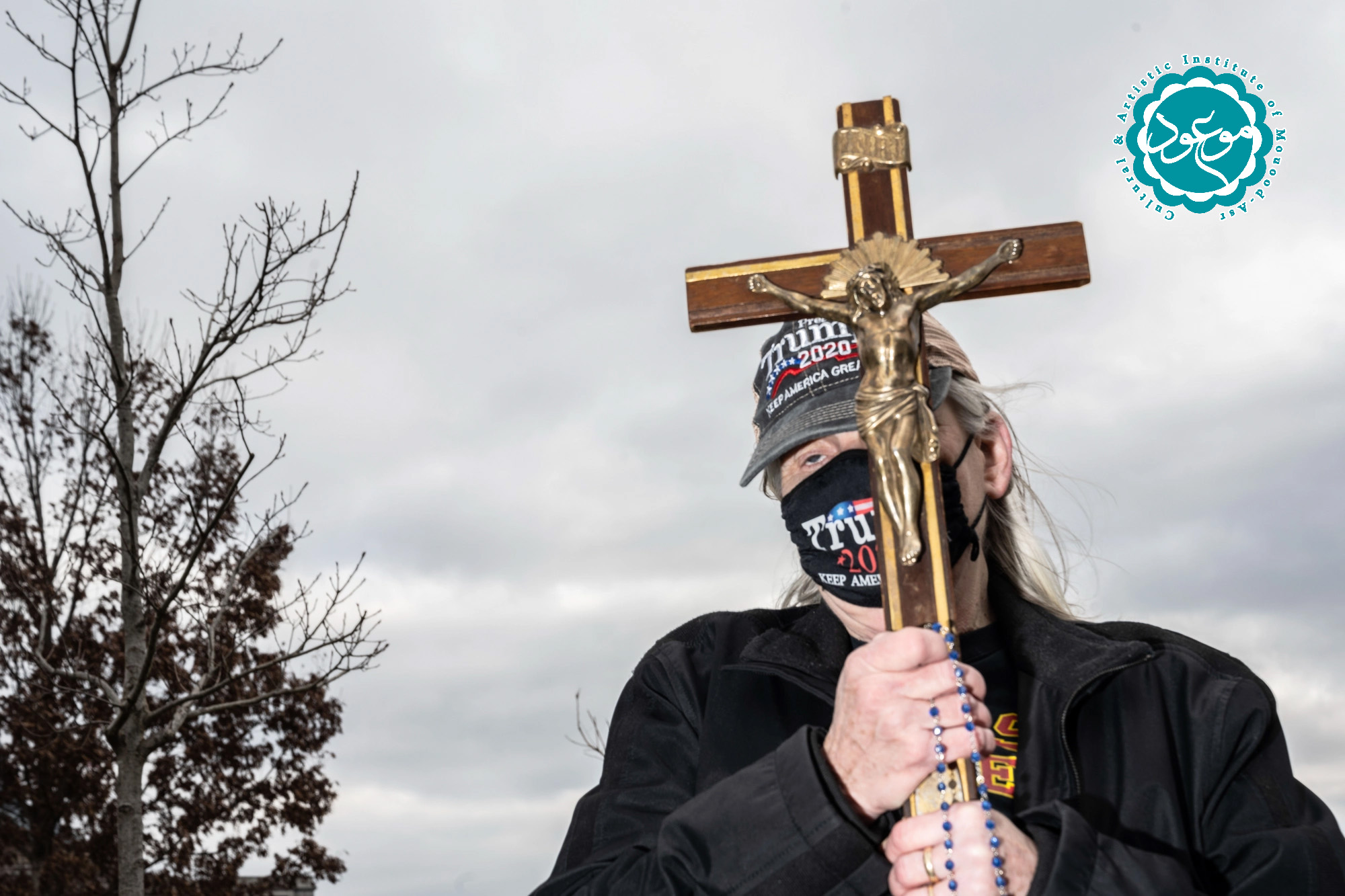
Ward: Shifting to the present day, the ubiquity of Christian symbols on Jan. 6 underscored the lines of continuity between older conservative Christian movements and today’s white Christian nationalist movement. But is there anything new or different about today’s movement that distinguishes it from the religious right of the past?
Onishi: There is a sense of acceleration in today’s movement. In the Obama years, you had somebody who really embodied the fears of the counter-revolution of the ’60s: a mixed-race man with a Black family, a Muslim dad, an immigrant dad, somebody who grew up in Hawaii, that far-away corner of the Union. And then during his presidency, through the Obergefell decision, same-sex marriage is made legal.
So in the wake of that presidency, there is a real sense [among white Christian nationalists] that the apocalypse is coming for this country if we don’t do something radical. The idea that they would continue in ways that are standard — campaign, voting drives, national renewal through ecumenical movements — that went by the wayside.
What set in during 2016 — and has remained with us ever since — is militant rhetoric that says, “It’s now all-out warfare.” What I’ve seen — and what I’ve documented with my colleague Matt Taylor — is an exponential rise in the rhetoric of spiritual warfare.
You have pastors who have influence over hundreds of thousands of people saying, “It is time to get your swords bloody, it is time to realize you’re in the battle for your life, it is time to realize that the demons controlling the Democratic Party, the deep state and the United States government will not stop until they have rooted out God from this country.”
And that kind of rhetoric is not something that you see from the Jerry Falwells or the Ronald Reagans of the ’70s and ’80s. That kind of acceleration, I think, is what enables political and actual violence to be legitimated from religious communities and by religious people.
Ward: Does that help explain why conservatives are increasingly embracing the term “Christian nationalist”? Liberal critics have hurled that term at religious conservatives for decades, but now we’re seeing conservative politicians like Marjorie Taylor Greene and conservative academics like Stephen Wolfe embrace it.
Onishi: When I converted in the ’90s, there was a sense of being counter-cultural Christians — that you’re part of a broader culture that no longer honors God, so you’re going to have to get used to being kind of thought of as a little bit counter-cultural. And as a teenager, that’s kind of a fun thing to do — that really appeals to the 16-year-old person, right?
I think in the 20-year shift that we’ve endured, the sense is no longer, “Hey, let’s be a countercultural Christian.” Instead, it is: “We as Christians are going to dominate and conquer culture, politics, economics and every other domain of society — so, yes, we are Christian nationalists, because we’re the Christians who are the rightful founders of this country and the rightful heirs of the founders.
We’re the people God has sent to take dominion over every aspect of the United States.
It’s a Christian nation, and we’re gonna build it in our vision.”
Ward: Nevertheless, some conservatives have argued that the GOP is now the party of the “post-Christian right” — in other words, that the primary issues shaping the Republican agenda are cultural or class-based rather than explicitly religious. What do you make of that?
Onishi: I think it’s a really short-sighted argument. All of the arguments that young Republicans make about the GOP being a post-religious party relate to issues like the backlash against critical race theory or about PTA meetings and those kinds of issues. But as I lay out in the book, and as many other scholars have laid out, the very issue of challenging the public school system is one that was invented by the religious right.
This was part of their playbook 60 years ago, and the whole anti-CRT campaign was carried out using the apparatus that Paul Weyrich and his cohorts helped to build.
In fact, I think what’s happened is that the ideology of the New Religious Right is so pervasive that a young Republican is engaged in it even if that young Republican does not consider themselves to be a religious person. In many ways, I think that’s a sign that Weyrich really succeeded in his mission.
I think it’s more accurate to say that Christian nationalism is nimble and agile enough to encompass a whole host of people, including young Republicans who may not attend church.
Ward: The history that you discuss in the book makes it clear that white Christian nationalists have never really hid their radicalism — and yet their role on Jan. 6 still came as somewhat of a surprise. Why didn’t the rest of America take them seriously?
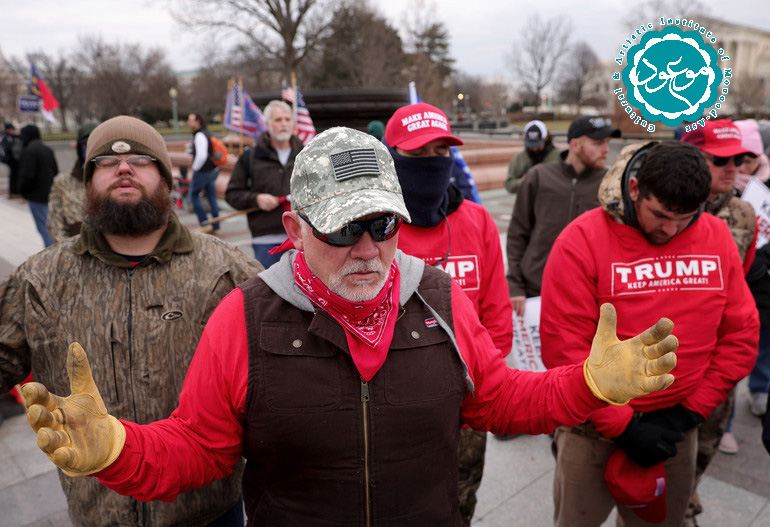
Onishi: A lot of folks are now very familiar with the phrase “white privilege,” but the writer Chrissy Stroop has helped me understand “Christian privilege” in the United States. The idea is that if you are a Christian person — especially a white Christian person — you are given a kind of benefit of the doubt in the public square.
When you use rhetoric that can only be classified as extreme, it’s often written off, and it doesn’t set off the alarm bells that would be set off if you were a Muslim person or if you were someone who was neither Christian nor white.
Many people imagine the white Christian still to be Ned Flanders from The Simpsons — the kind of pesky, moralist neighbor up the street who doesn’t want people to use bad language or drink too much beer at the barbecue. But we really should envision him as Mr. Burns, the person who wants absolute control over the public square and who will use any means necessary to get it.
Ward: What’s next for the white Christian nationalist movement? On the one hand, there is the partisan radicalism that Trump has unleashed, but on the other hand, there is a strong tendency toward retreat and separation on the part of Christians, signified by projects like the American Redoubt. Are these different paths for the movement, or just the same path under different guises?
Onishi: In many ways, it’s the same goal, even if the methodologies might differ. You’re still going to have Christian nationalists who want to be at the top of the ticket, whether that’s as governor or as president or in Congress.
But the American Redoubt movement represents the many Christian nationalists who are saying, “We’re going to move to a part of the country where we can really gather together in a separatist Christian society, and we’re going to prepare” — and these are their words, not mine —
“for the coming Civil War and the collapse of the United States, so that when that happens, we will be ready to rebuild it in our image.” So I think the goals are the same.
Ward: And I suspect that the demise of Trump — if such a thing happens — wouldn’t do much to alter either of those tendencies?
Onishi: Trump’s power and influence are in question. They’re in flux at the moment. But I think Trumpism — and Christian Trumpism in particular — are alive and well.
 Mouood Mouood English Edition
Mouood Mouood English Edition
